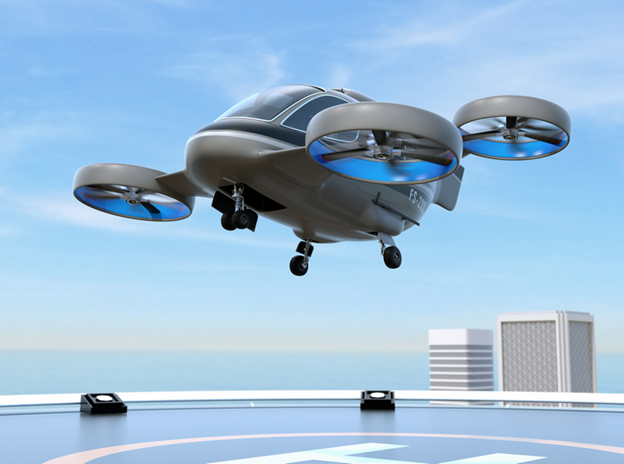
Today’s modern aircraft and unmanned aerial vehicles (UAVs) have sophisticated electrical systems that involve complex wiring. But that wasn’t always the case. The first airplane was operated with a series of ropes and pulleys. But, one day, someone began adding lights, batteries, and other components, each requiring a separate wire.
Wiring harnesses have become vital components in commercial and defense aviation. Simply put, these are groups of wires bundled together, eliminating the need to connect or splice each wire in an aircraft. A finished wiring harness can weigh upwards of 100 pounds and is installed as a single unit.
If you need to design a wiring harness or wired box assembly or want to understand what’s going into your finished product, here’s what you need to know about specifying wiring harnesses for aircraft and UAVs.
Benefits of Wiring Harnesses
There are several benefits to using wiring harnesses. The first is decreased installation time. Most aircraft require miles of wiring to operate. Using wiring harnesses significantly streamlines the installation by combining many cables and wires into a single harness versus running each wire individually.
The other benefit is increased safety and security. When cables and wires are connected with a single harness, the components are more secure against the adverse effects of abrasions, vibrations, and moisture. There are lower risks of electrical shorts and fires, and the space is better-optimized.
Types of Wiring Harnesses
Depending on the specific application, wiring harnesses can be made from various durable materials. Come of the most common include:
- Vinyl
- PVC
- Polyurethane
- Polyethylene
- Thermoplastic elastomer
The surrounding environment will largely dictate the specific material used for the harness. For example, if the wires are in an exceptionally moist or cold environment, the harness should be constructed from a material resistant to those elements, such as polyethylene.
In addition to the materials used, wiring harnesses can be further customized to meet specific applications. Additional features you might find in wiring harnesses include:
- Custom colors
- Heat-shrink coatings
- Lacing
- Wire ties
- Custom shielding
- Insulation materials
- Individual tagging
- Custom barcoding or labeling
- Independent circuit IDs
- Four-color ink stamping
- Nylon, polypropylene, and paper fillers
How Aircraft Wiring Harnesses are Designed
Aircraft harnesses are designed using several documents - the air vehicle specification (AVS) and the Society of Automotive Engineers (SAE) standard AS50881 Aerospace Vehicle Wiring.
The AVS is a document produced by aircraft engineers that details every aspect of the design, including the wiring harnesses. The SAE standard is an industry document that outlines data such as wire current carrying capacity, how wires should be routed, marked, and identified, and other useful requirements and guidelines.
Beyond reviewing these two documents, here is how aircraft wiring harnesses are designed and assembled.
Choosing the Right Types of Parts
You can choose from thousands of part numbers when designing a wiring harness. So, how do you know which are the right ones? It starts with understanding the difference between standard, nonstandard, and commercial off-the-shelf (COTS) parts.
Standard parts are military parts, meaning the U.S. military controls them. Most of the part numbers start with an “M” or “M.S.” Some might begin with “NAS,” which designates National Aerospace Standard parts. The U.S. government only approves certain suppliers and manufacturers to make these parts.
A nonstandard part is slightly changed from a military part. It can be used for various purposes but is generally more costly than standardized parts.
Commercial off-the-shelf (COTS) parts are designed and controlled by a private manufacturer. Neither the military nor a private aircraft manufacturer has control over these parts. But they are affordable even though the manufacturer can change their specs anytime.
What About Wire Selection?
The next step is choosing the correct wires for your harness. When you view the aircraft’s system schematic, it will indicate where wires are required and what type of signals the wires will carry - A.C., DC, radio, data, etc. You’ll want to choose the correct wire based on the type of signal and how much current it will carry. The insulation for the wires will depend on the environment for the wires.
Identifying the Wires in the Harness
Anything that conducts a current in an aircraft should be carefully and clearly labeled with a unique identifier. For example, the wiring harness will be marked and identified, but so will the individual components. When using these items, there may be several identifiers - the wiring harness, the wire I.D., and the wire gauge.
Choosing the Right Connectors
Connectors are used on aircraft wiring harnesses and are a means to join the various components. Every connector has a “male” and “female” component, but the challenge is to choose the right connectors for a particular purpose.
Thousands of different connectors are available in aircraft and UAV design, but only a few common series are considered standards. When deciding which connector you will use, you’ll want to consider several factors, including the number of wires, the gauge of the wires, and which wires will require a connector.
Understanding Shield Termination
Every conductor in a wire is somehow terminated. To combat the effects of electromagnetic interference (EMI) from so many wires in a small space, you use something called shield termination.
A metallic shield is placed around the wire’s conductors and then coated with insulation. Shield termination happens when a shielded wire is terminated to another component so that there remains a clear signal.
Protecting the Wiring Harness
One of the final steps in designing or assembling a wiring harness is its protection. Once connected, wires are bound together with ties, heat shrink tubing, tie wraps, or braiding to create a smaller package and protect the components of the harness. Various methods of bundling have their advantages and disadvantages. Still, the goal is to protect the item from vibration, moisture, and chafing to be easier to install and deliver a long-lasting and high-quality performance.
Interested?
We represent two outstanding companies that manufacture wire harnesses and cables. If we can get a summary of your needs, we can make recommendations and save you time and money!
Please take a moment to reach out to us!




